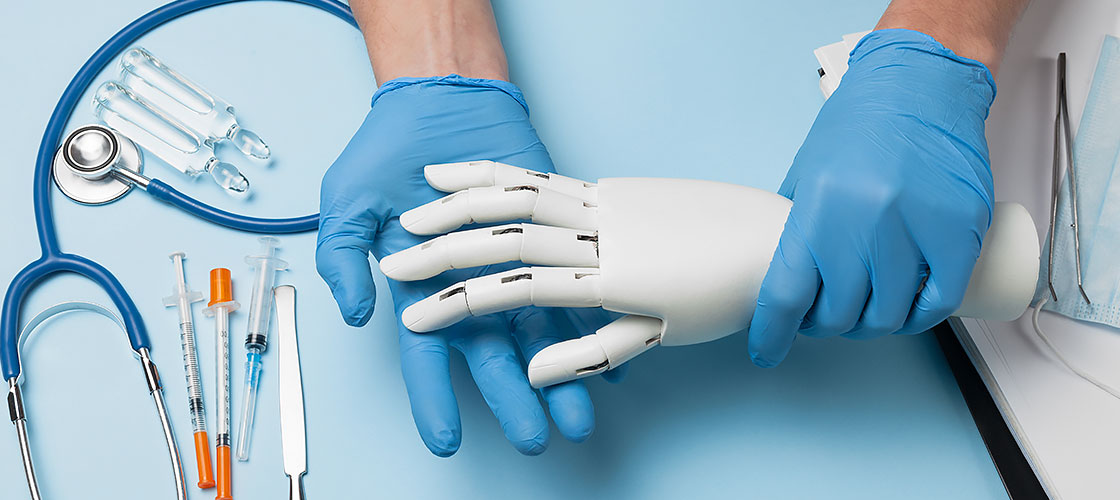New York-based 3D printing service bureau Shapeways announced it would be the exclusive 3D printing manufacturer for healthcare technology provider Armor Bionics. As part of the deal, Shapeways will provide the manufacturing expertise and global distribution that the startup requires to grow its business. In fact, Shapeways facilities will 3D print complex, patient-specific medical models for pre-surgical planning and deliver them to surgeons within 24 hours to meet stringent medical timetables.
Focused on designing tools to optimize surgical planning, Armor Bionics specializes in 3D visualization and materialization of sliced-based imaging acquisition data by developing tailor-made solutions for the medical field. Through its online platform, the brand allows doctors, hospitals, and patients to upload medical imaging, like MRI or CT scans, to obtain highly accurate 3D printable models. Fully adapted to each patient, these medical devices better represent a person’s current anatomical condition, assisting them during the diagnostic and surgical planning stage while reducing risks, costs, and surgery time.
For example, patients going into surgery can convert complicated and confusing 2D medical images into 3D models that perfectly replicate their anatomy. While doctors can choose to design, plan and practice their next surgery on a customized 3D printed model. For hospitals, Armor Bionics offers an even more comprehensive solution, the chance to launch a 3D anatomic modeling laboratory through their online service, allowing surgeons within the institution to have immediate access to 3D models without any long-term investments or special and technical skills required.
Headquartered in Montevideo, Uruguay, co-founders Pablo Pereira, and Bruno Demuro aim to expand their operations in the U.S. and Europe by partnering with Shapeways. Demuro claimed that one of the company’s biggest growth barriers within the surgical field was a lack of reliable facilities for 3D printing models. So instead, the new collaboration will leverage Shapeways ISO 9001-compliant manufacturing sites in Long Island City, New York, and Eindhoven, in the Netherlands, to enhance Armor Bionics workflow. Overall, Armor Bionics will deliver highly accurate 3D models to customers really fast, no matter where they are located.
As part of their partnership, Armor Bionics CEO Demuro worked with his team to review the first 3D model they got from Shapeways. He described it as “absolutely perfect.” In fact, the startup’s engineers measured the size of every bone to make sure it was as accurate as the design file they originally sent. In comparison, Shapeways’ model was “flawless.”
Customized medical models are an ideal preoperative planning tool proven to reduce surgery time in the operating room (OR), shorten recovery times for patients, and aid surgeons in anticipating potential complications. As research studies continue to show, the 3D printed surgical model market is growing rapidly, expected to reach $3.7 billion by 2027. This unique development is poised to become the standard of care for surgical interventions in the next decade.
Innovative medical models offer a complete roadmap for treatment and surgery, educating patients, empowering surgeons, and preventing complications in the OR. Furthermore, according to Armor Bionics, the relevance of 3D printed medical models becomes even more apparent when surgeons are preparing for delicate procedures such as spinal surgeries. Viewing a physical 3D model of a spine, heart, or another internal organ allows doctors to plan, adjust, and practice the surgery beforehand, which leads to shorter surgeries. For example, surgeons can make smaller incisions after planning on physical models, leading to reduced bleeding and quicker recovery times.
At the Hospital Universitario Austral in Argentina, Dr. Christian Kreutzer, Chief of Congenital Heart Surgery and former fellow at Boston Children’s Hospital, worked with Armor Bionics and Shapeways to replicate an eight-month-old patient’s heart. Kreutzer said the online platform easily converted scans into physical 3D models to scale and that while analyzing the medical model, he could adapt the planned surgery to reduce the recovery time by half and save the baby’s life.

Surgeons at the Hospital Universitario Austral in Argentina perform pediatric heart surgeries using 3D printed models pre-operatively. Image courtesy of Hospital Universitario Austral.
The new partnership comes on the heels of some big news for Shapeways. Just last April, the company announced it entered into a definitive agreement with special purpose acquisition company (SPAC) Galileo Acquisition to take the company public. After successfully delivering over 21 million parts to one million customers in over 160 countries and disrupting a multi-billion dollar global manufacturing market by digitizing end-to-end manufacturing processes, the move implies an initial enterprise value of approximately $410 million. In addition, Shapeways expects to be listed on the New York Stock Exchange (NYSE) under the ticker “SHPW” through a transaction that will ensure $195 million of net proceeds to scale materials, markets and technologies, and expand its capabilities to accelerate the adoption of additive manufacturing in key markets, including medical.
Subscribe to Our Email Newsletter
Stay up-to-date on all the latest news from the 3D printing industry and receive information and offers from third party vendors.
You May Also Like
Gorilla Sports GE’s First 3D Printed Titanium Cast
How do you help a gorilla with a broken arm? Sounds like the start of a bad joke a zookeeper might tell, but it’s an actual dilemma recently faced by...
Nylon 3D Printed Parts Made More Functional with Coatings & Colors
Parts 3D printed from polyamide (PA, Nylon) 12 using powder bed fusion (PBF) are a mainstay in the additive manufacturing (AM) industry. While post-finishing processes have improved the porosity of...
$25M to Back Sintavia’s Largest Expansion of Metal 3D Printing Capacity Since 2019
Sintavia, the digital manufacturing company specializing in mission-critical parts for strategic sectors, announced a $25 million investment to increase its production capacity, the largest expansion to its operations since 2019....
Velo3D Initiates Public Offering in a Bid to Strengthen Financial Foundations and Drive Future Growth
Velo3D (NYSE: VLD) has been among a number of publicly traded 3D printing firms that have attempted to weather the current macroeconomic climate. After posting a challenging financial report for 2023,...


































